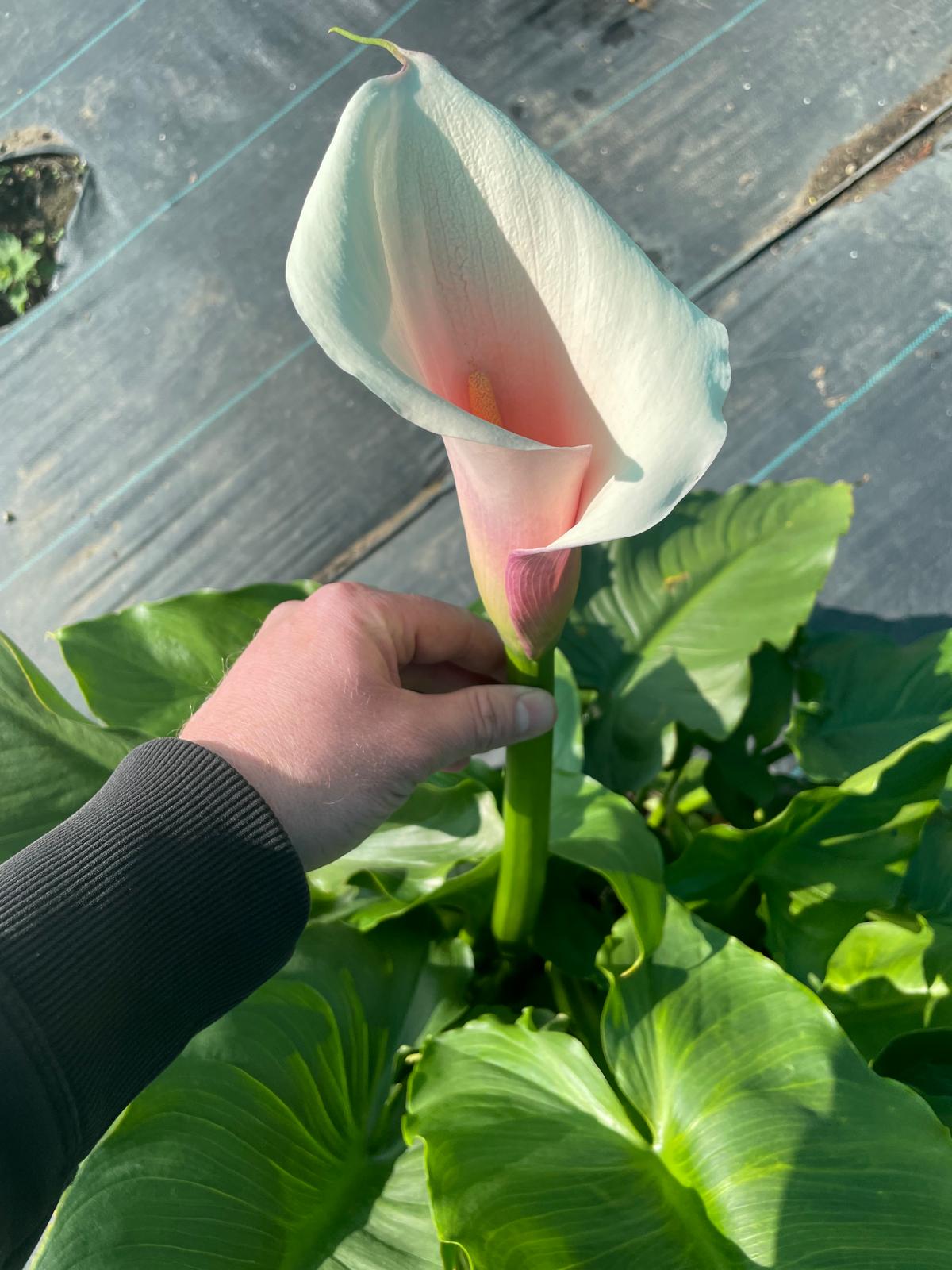Your cart is currently empty!
Black Calla Lily Seeds: A Comprehensive Guide from Care to Blooming

Introduction
The enigmatic black calla lily (Zantedeschia aethiopica ‘Crowborough’) captivates with its velvety, obsidian-black blooms and striking upright foliage. Unlike true lilies, these plants belong to the Araceae family, native to South Africa. Growing black calla lilies from seeds offers a rewarding experience, allowing you to witness their splendor from the very beginning.
Choosing and Sowing Seeds
Seed Selection
Selecting high-quality seeds is crucial. Consider reputable vendors or collect seeds from healthy, mature plants. Look for plump, unblemished seeds that are dark brown or black in color.
Sowing Time and Germination
Start sowing seeds indoors 8-10 weeks before the last spring frost. Fill a seed tray with a sterile seed-starting mix. Sow seeds 1/4 inch deep and cover lightly with soil. Keep the soil moist but not soggy. Ideal germination temperatures range from 65-75°F (18-24°C).
Seedling Care
Lighting
Seedlings require bright, indirect light. Place them in a sunny windowsill or under grow lights for 12-14 hours daily.
Watering
Water seedlings regularly, keeping the soil moist but not waterlogged. Allow excess water to drain away.
Fertilizing
Fertilize seedlings every 2-3 weeks with a diluted liquid fertilizer. Use a balanced fertilizer diluted to half strength.
Repotting
Repot seedlings into individual containers once they have developed a few true leaves. Use a well-draining potting mix.
Planting Outdoors
Hardening Off
Gradually acclimate seedlings to outdoor conditions by exposing them to the elements for increasing periods.
Planting Location
Black calla lilies prefer moist, well-drained soil and partial shade. Plant them in areas that receive 4-6 hours of sunlight per day.
Spacing and Depth
Space plants 12-18 inches apart. Dig holes deep enough to accommodate the entire root ball and plant the tuberous rhizomes just below the soil surface.
Care and Maintenance
Watering
Water deeply and regularly, especially during hot, dry weather. Avoid overwatering, as this can lead to root rot.
Fertilizing
Fertilize plants every 2-3 weeks with a balanced liquid fertilizer. Stop fertilizing in late summer or fall.
Mulching
Mulch around plants with organic matter, such as compost or shredded bark, to retain moisture and suppress weeds.
Overwintering
In cold climates, dig up the tuberous rhizomes in fall and store them in a cool, dry place until spring. In warmer climates, mulch heavily around the plants to protect them from frost.
Blooming
Flowering Time
Black calla lilies typically bloom from mid-summer to early fall. The flowers consist of a central spadix surrounded by a showy, dark purple to black spathe.
Encouraging Blooms
To encourage abundant blooms, provide plenty of sunlight, fertilize regularly, and water deeply. Deadhead spent flowers to promote new growth.
Additional Tips
- Black calla lilies may take several seasons to reach maturity and produce flowers.
- Be patient and provide consistent care for optimal growth and blooming.
- Consider planting companion plants that tolerate moist conditions, such as hostas, ferns, or azaleas.
- Black calla lilies are toxic to pets and humans if ingested, so handle them with care.
Conclusion
Growing black calla lilies from seeds can be an enriching endeavor, offering the joy of nurturing these elegant plants from their humble beginnings. By following the guidelines outlined in this guide, you can ensure their success and enjoy the captivating beauty of their enigmatic blooms season after season.
Looking for services in Ferns? You may also like: Flower Delivery 24 | Log Cabins Ireland.
Our Shop
-
Crowborough — Zantedeschia aethiopica ‘Crowborough’
-
Green Goddess — Zantedeschia ‘Green Goddess’
-
Hercules — Zantedeschia aethiopica ‘Hercules’
-
Highveld — Zantedeschia ‘Highveld’
-
Odorata — Zantedeschia odorata
-
Pink Flamingo — Zantedeschia ‘Pink Flamingo’
-
Pink Mist — Zantedeschia ‘Pink Mist’
-
White Giant — Zantedeschia aethiopica ‘White Giant’










Leave a Reply